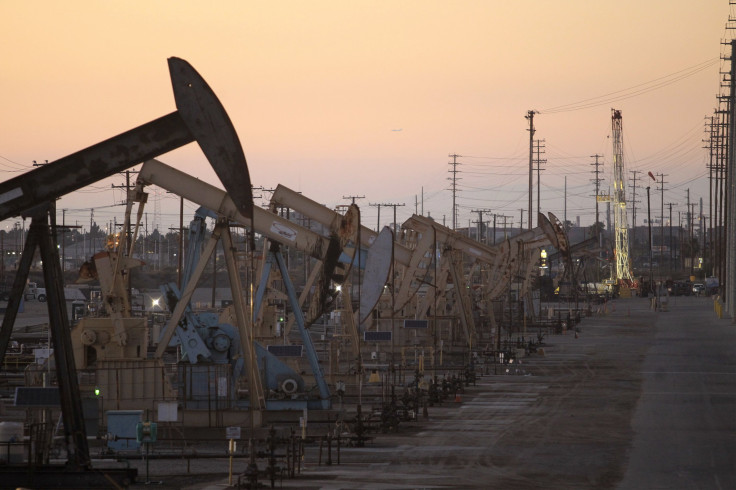Why The U.S. Bans Crude Oil Exports: A Brief History

“The time has come to end the long debate over national energy policy in the United States and to put ourselves solidly on the road to energy independence. … This bill is only the beginning.”
Those were the words President Gerald Ford said on Dec. 22, 1975, as he signed into law the Energy Policy and Conservation Act, a ban on most U.S. oil exports that remains a topic of energy debates today.
According to the International Energy Agency, the U.S. will pass Russia and Saudi Arabia as the world’s top oil producer in 2015. So naturally, there’s been a lot of chatter about changing the 39-year-old ban.
Energy Secretary Ernest Moniz said earlier this month that the oil industry hasn’t yet made a convincing argument for why the U.S. should lift the ban. Several legislators, including Sens. Ron Wyden, D-Ore., Maria Cantwell, D-Wash., and Lisa Murkowski, R-Alaska, have asked the Energy Information Administration this month to study the potential economic effects of authorizing more crude oil exports.
Independent refineries are lobbying to keep the ban in place, so they can continue to export their refined and finished products at a premium price. Environmentalists, too, argue to keep the ban to curb further increases in fossil fuel-production. And now Russia’s invasion of Crimea has entered into arguments to lift the ban, to the effect that the U.S. could export natural gas to Europe and reduce the region’s dependence on Russia.
Essential to the debate, and often missing, is why the U.S. bans most crude oil exports.
Congress passed EPCA to stifle the impact of future oil embargos by foreign oil producing countries. Ford signed the bill after the 1973 Arab oil embargo shook the U.S. with high world oil prices. The law requires the president to ban crude oil exports but left room for exceptions.
The Commerce Department has given export licenses for particular types of oil, but in recent years, these have been sparse. Exports of crude oil peaked at 104 million barrels of oil in 1980, but have since fallen to 43.8 million barrels in 2013. Crude from Alaska’s Cook Inlet, oil passing through the Trans-Alaskan Pipeline, oil that’s shipped north for Canadian consumption, heavy oil from particular fields in California, some small trades with Mexico, and some exceptions for re-exporting foreign oil make up those exports.
The point of EPCA, even with the exemptions, is to insulate the U.S. from volatile and sometimes unpredictable global crude markets. Other measures inside EPCA shared this goal, like conservation efforts still evolving today that created fuel standards for cars and trucks.
The Corporate Average Fuel Economy standards for cars set gas mileages for model years in the late 1970s and 1980 at 18-20 miles per gallon. By 1985, the standard rose to 27.5 miles per gallon. The Energy Conservation Program, another part of EPCA, gives the Energy Department the authority to develop conservation and efficiency standards for consumer appliances and equipment.
EPCA also established the Strategic Petroleum Reserve, a network of oil storage sites. The reserve’s sites were filled with oil beginning in 1977 and will be usable until about 2025. As early as 1944, then-Interior Secretary Harold Ickes pushed for the federal government to store oil for emergencies. In the '50s, Presidents Harry Truman and Dwight Eisenhower recommended similar oil strategies, followed by the Cabinet Task Force on Oil Import Control in 1970.
All of these measures were meant to harbor as much crude oil inside the U.S. as possible to reduce the nation’s reliance on oil imports. While oil imports dropped after EPCA, they rose again a decade later, and the debate over EPCA hasn’t stopped since.
© Copyright IBTimes 2025. All rights reserved.






















